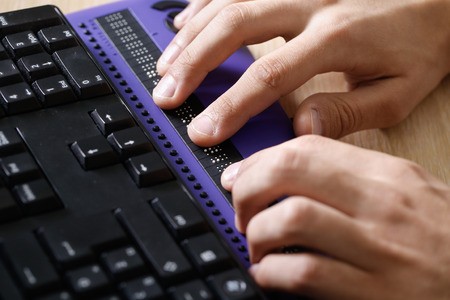
Blindness affects more than 21 million people in North America. The World Health Organization estimates 246 million people worldwide suffer from some form of visual impairment – with 39 million of those classified as blind. What’s more, according to the National Eye Institute, the number of people who are blind or have low vision is projected to double in the next decade.
For the visually impaired, the ability to access bills, statements and other transactional documents means greater independence. For companies, accommodating customers who are visually impaired is not just good business, it’s required by federal legislation. To promote compliance and support forward-thinking corporate initiatives, many organizations are seeking solutions for the delivery of billing statements and other transactional documents for visually impaired customers in alternate formats.
508 Document Accessibility Compliance
In 1998, the US Congress amended the Rehabilitation Act to require Federal agencies to make their electronic and information technology accessible to people with disabilities. Section 508 was enacted to eliminate barriers in information technology, to make available new opportunities for people with disabilities and to encourage development of technologies that will help achieve these goals. The law applies to all Federal agencies when they develop, procure, maintain or use electronic and information technology. Under Section 508 (794d), agencies must give disabled employees and members of the public access to information that is comparable to the access available to others.
This requirement is being extended to include all public agencies that interact with the public.
PDF/UA – “Universally Accessible”
What are some options to consider in order to better serve your customers with visual impairment? Most recently, Universally Accessible PDFs, or PDF/UA documents, have been developed for people with disabilities who require assistive technology to communicate. According to Dr. Judith Dixon, the consumer relations officer for the National Library Service for the Blind, universal document accessibility means employing all of the above.
“An accessible PDF document is quite accessible for people who have the right equipment,” says Dr. Dixon. “But it is important for any company to know their constituents. Not all people have computers, or can use them effectively, so other alternatives need to also be used and considered.”
What Can You Do?
We have one solution that helps provide alternatives. Our flagship document generation software, DocOrigin, now integrates the design and creation of PDF/UA, meeting ISO 14289-1 and WCAG 2.0 standards for PDF documents.
As the “Baby Boomer” generation continues to age, the number of people requiring the use of assistive technology increases. With PDF/UA conforming files, readers and assistive technology, these individuals and others with disabilities can have equal access to online information. In particular:
- Reading invoices, order acknowledgements, statements, etc.
- Reading educational and training materials
- Accessing important documentation
- Submitting online employment applications
- Purchasing products and services
PDF/UA compliant documents contain tags that identify content according to structure, allowing documents containing images, form fields, tables, lists and other information to be rendered properly utilizing a number of different assistive devices such as screen magnifiers, text-to-voice devices and braille keyboards and readers.
Click here to learn more about PDF/UA, and how worldwide legislation seeks to guarantee equal access to information for all.
Moving Forward
DocOrigin makes it easy to comply with standards set out by PDF/UA by building compliant documents as part of the document design and generation process, negating the need for post-processing software or intervention to render documents according to these standards.
Want to know more? Contact us today for a free demonstration of DocOrigin and it’s easy to use PDF/UA capabilities.

